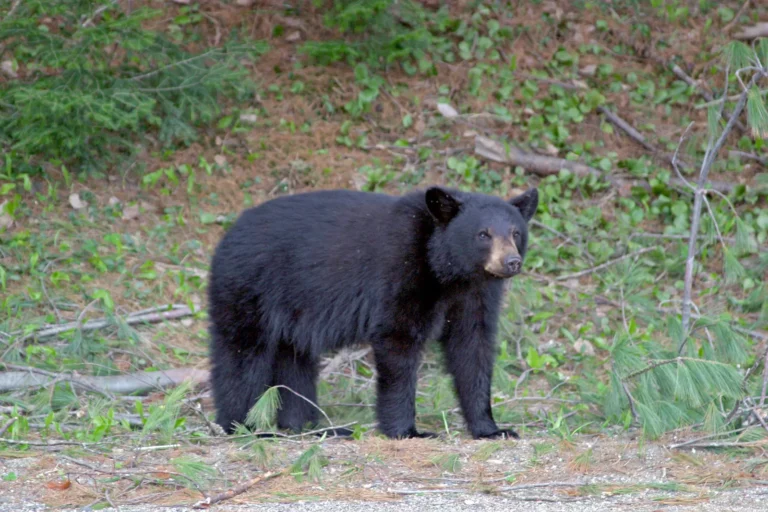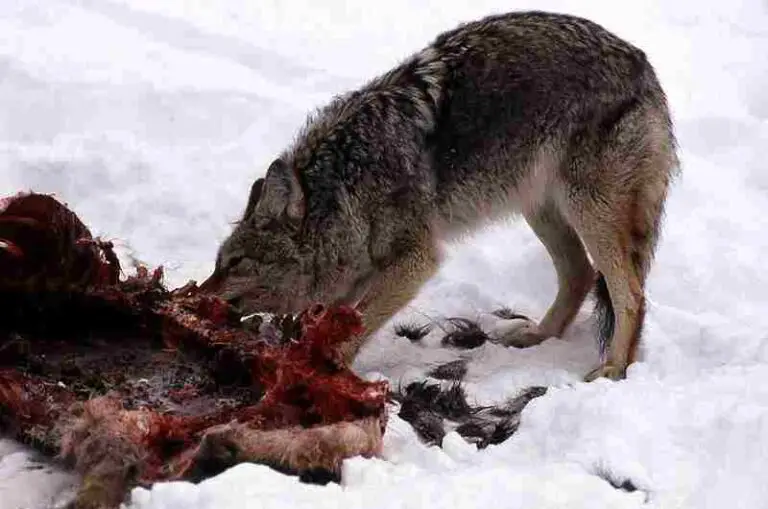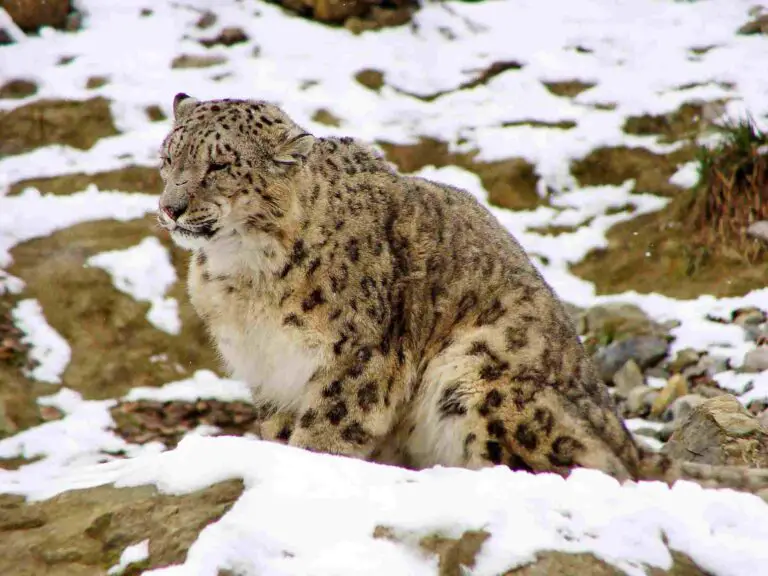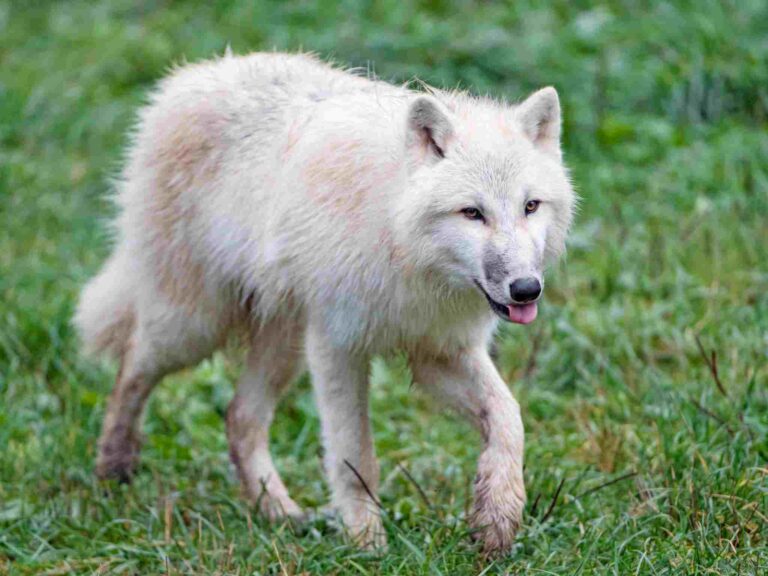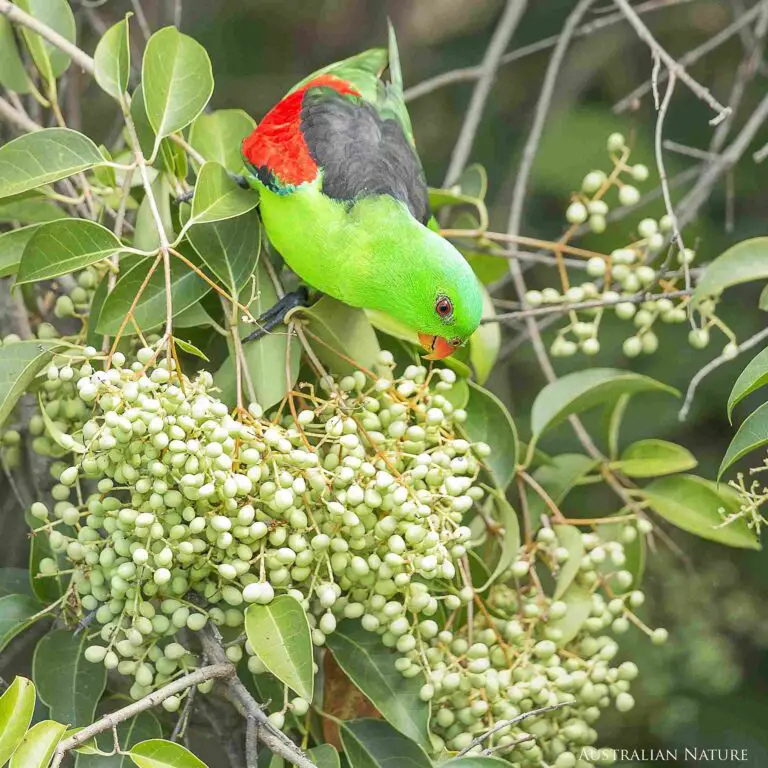Is a Coyote an Omnivore? Assessing the Dietary Preferences of Coyotes
Coyotes are indeed omnivores, as they consume both plant and animal biomass. This dietary versatility is one of the reasons why coyotes are considered omnivorous. They have the ability to adapt their diet based on the availability of food sources in their environment. Coyotes are opportunistic and highly adaptable, allowing them to take advantage of a wide range of food options.
While they primarily feed on small mammals like rabbits and rodents, they also consume fruits, vegetables, and carrion. This flexibility in their diet enables coyotes to survive in various habitats and ensures their ability to find sustenance even in challenging conditions.
Are Coyotes Omnivores?
Coyotes are indeed omnivores, as they consume both prey and plant matter. Their diet consists of a variety of food sources, including small mammals, fruits, vegetables, and carrion. This dietary versatility is one of the key reasons why coyotes are considered omnivorous.
Coyotes have the ability to adapt their diet based on the availability of food sources in their environment. They are opportunistic and highly adaptable, allowing them to take advantage of a wide range of food options. While they primarily feed on small mammals like rabbits and rodents, they also consume fruits and vegetables, which provide them with essential nutrients.
In addition to hunting and consuming prey, coyotes are known to scavenge for carrion. They are not solely reliant on hunting for their food, but can also feed on the remains of dead animals. This opportunistic behavior further supports their classification as omnivores.
The ability of coyotes to consume both plant and animal matter is crucial for their survival and success in various habitats. This flexibility in their diet enables them to find sustenance even in challenging conditions. It also allows them to thrive in different ecosystems, from forests to grasslands.
Reasons Why Coyotes are Omnivores
1. Dietary Versatility
One of the main reasons why coyotes are considered omnivores is their dietary versatility. They have the ability to consume a wide range of food sources, including both plant matter and animal prey. This adaptability allows them to survive in various habitats and environments.
Coyotes are known to consume fruits, berries, and other plant materials, especially during the summer months when these food sources are abundant. They also feed on small mammals, such as rabbits and rodents, as well as birds, reptiles, and even insects. This diverse diet ensures that coyotes can find food throughout the year, regardless of seasonal changes or fluctuations in prey availability.
Their ability to switch between different food sources is a key characteristic of omnivores. This dietary versatility is crucial for their survival, especially in areas where food resources may be limited or unpredictable. By being able to adapt their diet to the available options, coyotes can maintain their population and thrive in a variety of ecosystems.
2. Coyotes are Opportunistic and Highly Adaptable
Coyotes are opportunistic and highly adaptable, which is another reason why they are considered omnivores. Their ability to take advantage of various food sources allows them to survive in different environments and thrive in changing conditions.
In terms of opportunistic behavior, coyotes are known to scavenge for food, consuming animal flesh from prey and carrion. They are not strict or obligate carnivores, as they also supplement their diet with plant matter. This includes succulent stems and foliage, as well as fruits. By incorporating plant material into their diet, coyotes can obtain essential nutrients and maintain their overall health.
The adaptability of coyotes is evident in their ability to switch between different food sources based on availability. They have the flexibility to adjust their diet according to the changing seasons and fluctuations in prey populations. For example, during the summer months when fruits and berries are abundant, coyotes will include these plant-based foods in their diet. In contrast, during times when prey is scarce, they rely more heavily on plant matter to sustain themselves.
This opportunistic and adaptable nature is a key characteristic of omnivores. It allows coyotes to survive in a wide range of habitats, from forests to deserts, and from urban areas to rural landscapes. Their ability to exploit various food sources ensures their resilience and success as a species.
Is a Coyote a Carnivore?
While coyotes do consume animal flesh from prey and carrion, they are not strict or obligate carnivores. They also supplement their diet with plant matter, such as succulent stems, foliage, and fruits. This makes them omnivores, capable of obtaining essential nutrients from both animal and plant sources.
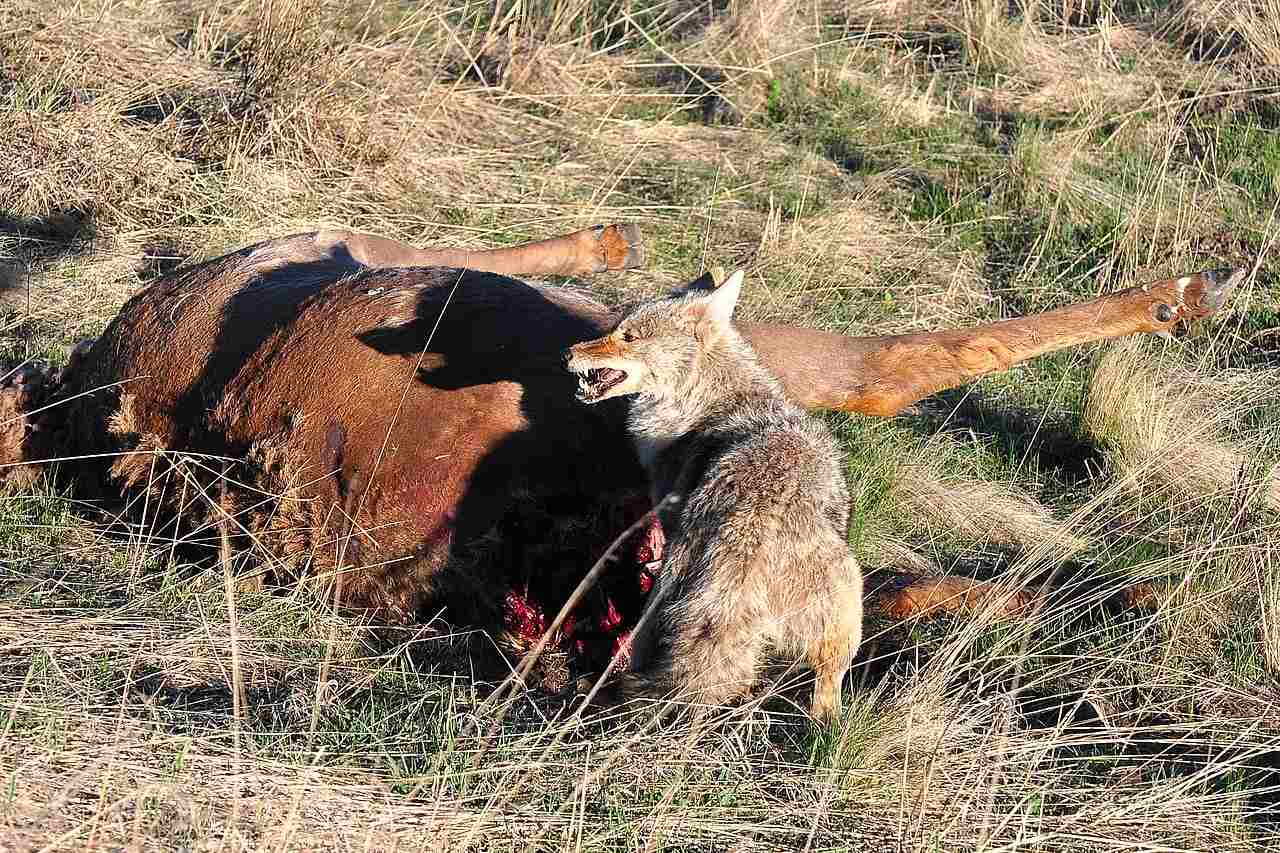
Coyotes exhibit a clear and simple dietary preference, incorporating a variety of food sources into their meals. Their opportunistic behavior allows them to scavenge for food, taking advantage of available animal flesh. However, they also recognize the nutritional value of plant material and include it in their diet.
The consumption of plant matter by coyotes serves multiple purposes. It provides them with essential nutrients that may be lacking in their carnivorous diet, ensuring their overall health and well-being. Additionally, incorporating plant material into their meals allows coyotes to adapt to changing environmental conditions and food availability.
The ability of coyotes to switch between different food sources based on availability is a testament to their adaptability. This flexibility is a key characteristic of omnivores, enabling them to survive in various habitats and thrive in different ecosystems. Coyotes can adjust their diet according to the changing seasons and fluctuations in prey populations, ensuring their resilience as a species.
Why a Coyote is Not a Carnivore
1. Opportunistic Behavior
Coyotes are known for their opportunistic behavior when it comes to food. Unlike obligate carnivores, they do not rely on one kind of food source. This adaptability allows them to thrive in a variety of environments and habitats.
One of the key reasons why coyotes are considered opportunistic eaters is their ability to consume both plant and animal matter. They have a diverse diet that includes small mammals, birds, reptiles, insects, fruits, berries, and even carrion. This flexibility in their food choices enables them to survive in different ecosystems, from forests to deserts.
Coyotes are skilled hunters, but they are also scavengers. They take advantage of any available food source, whether it’s a fresh kill or a discarded meal. This opportunistic behavior allows them to make the most of their surroundings and ensures their survival in challenging conditions.
In urban areas, coyotes have adapted to human presence and have been known to scavenge from garbage cans and dumpsters. They are also attracted to pet food left outside or small domestic animals that are left unattended. This adaptability to human-altered environments has contributed to their success in expanding their range.
2. Lower Predatory Capacity than Other Predators
Coyotes, while opportunistic eaters, have a lower predatory capacity compared to larger carnivorous predators such as wolves and mountain lions. This is primarily due to their smaller size, lack of strength, and less specialized hunting skills.
Unlike wolves and mountain lions, coyotes are not apex predators. They are smaller in size, typically weighing between 20 to 50 pounds, whereas wolves can weigh up to 175 pounds and mountain lions can weigh up to 200 pounds. This size difference limits the prey that coyotes can successfully take down. They are more likely to target smaller mammals such as rabbits, rodents, and birds.
In addition to their smaller size, coyotes also lack the strength and power of larger predators. Wolves and mountain lions have stronger jaws and muscular bodies, allowing them to bring down larger prey and exert dominance over their territory. Coyotes, on the other hand, rely more on their agility and speed to catch their prey.
Furthermore, coyotes do not possess the same level of specialized hunting skills as wolves and mountain lions. These larger predators have evolved to be highly efficient hunters, with tactics such as pack hunting and stealthy stalking. Coyotes, while intelligent and adaptable, do not exhibit the same level of hunting specialization.
Are Coyotes Omnivores or Carnivores?
Coyotes are not strictly omnivores, but rather carnivores with opportunistic and adaptable feeding habits. This characteristic allows them to survive in a variety of environments, including urban ecosystems.
While coyotes primarily rely on meat as their main food source, they are not limited to a strictly carnivorous diet. They are opportunistic eaters, meaning they will take advantage of any available food source to meet their nutritional needs. This adaptability is a key factor in their success as a species.
In addition to hunting and consuming small mammals such as rabbits, rodents, and birds, coyotes are known to scavenge on carrion and feed on insects, fruits, and vegetation. This flexibility in their diet helps them survive in different habitats and seasons when their preferred prey may be scarce.
Coyotes have been observed consuming a wide range of plant-based materials, including fruits and berries. However, it is important to note that they are not considered herbivores like rabbits, deer, or elk. Unlike these obligate herbivores, coyotes possess predatory adaptations that allow them to capture and consume animal prey efficiently.
While coyotes can consume plant-based materials, they cannot rely solely on them to meet all their nutritional requirements. They still need to obtain essential nutrients, such as proteins and fats, from animal sources. This is why they are classified as carnivores rather than omnivores.
Is a Coyote a Herbivore?
No.
While coyotes can consume plant-based materials like fruits, they are not considered herbivores. Unlike obligate herbivores such as rabbits, deer, or elk, coyotes possess predatory adaptations that allow them to capture and consume animal prey efficiently. This is the reason why they are not classified as herbivores.
Coyotes have been observed consuming a wide range of plant-based materials, including fruits and berries. However, their ability to consume these plant materials does not make them herbivores. They still rely on animal sources to obtain essential nutrients such as proteins and fats. Coyotes cannot gain all the needed nutrients solely from plant materials, which is why they are classified as carnivores rather than herbivores.
The predatory adaptations of coyotes enable them to hunt and consume animal prey effectively. They have sharp teeth and strong jaws that allow them to capture and kill their prey. Their digestive system is also designed to process and extract nutrients from animal tissues. These adaptations are essential for their survival and distinguish them from herbivores that solely rely on producers like plants as their food sources.
While coyotes may consume plant-based materials as part of their diet, their primary food source is meat. They are opportunistic eaters, meaning they will take advantage of any available food source to meet their nutritional needs. This adaptability allows them to survive in various environments and seasons when their preferred prey may be scarce.
Is a Coyote a Carnivore, Herbivore, or Omnivore?
Coyotes are classified as omnivores. Unlike carnivores, which are strict meat-eaters, coyotes have a more versatile diet that includes both plant and animal matter. However, they are not considered herbivores because they do not solely rely on producers like plants as their food sources.
Coyotes exhibit opportunistic behavior when it comes to their diet. They have the ability to adapt to different food sources depending on what is available in their environment. This adaptability allows them to survive in various habitats and seasons when their preferred prey may be scarce.
In terms of their diet, coyotes primarily consume meat. They are skilled hunters and have predatory adaptations that enable them to capture and kill their prey effectively. Their sharp teeth and strong jaws allow them to tear through flesh, while their digestive system is designed to process and extract nutrients from animal tissues.
However, coyotes are not solely dependent on animal prey. They have been observed consuming a wide range of plant-based materials, including fruits and berries. While these plant materials provide some nutrients, coyotes cannot obtain all the essential nutrients they need solely from plants. They still require animal sources to obtain proteins and fats.
FAQs
1. Are Coyotes Bad for the Environment?
Coyotes are not typically considered bad for the environment. In fact, they play a crucial role in maintaining the balance of ecosystems. One of the key benefits of coyotes is their ability to control overpopulation and overgrazing. By preying on smaller mammals, such as rabbits and rodents, coyotes help prevent these populations from becoming too large and causing damage to vegetation and other wildlife.
Additionally, coyotes contribute to resource depletion by consuming carcasses. This helps to clean up the environment and prevent the spread of diseases that can be carried by decaying animals. By recycling these resources, coyotes play a vital role in the natural cycle of life and death.
Furthermore, coyotes help prevent carcass littering. They scavenge on dead animals, reducing the presence of carcasses in the environment. This not only helps to maintain cleanliness but also prevents the attraction of scavengers that may pose a threat to other wildlife.
2. Why are Coyotes Important to the Ecosystem?
Coyotes play a crucial role in maintaining the balance of ecosystems, making them important to the overall health and functioning of the environment. They contribute to enhancing species richness and biodiversity by controlling the populations of smaller mammals, such as rabbits and rodents. By preying on these animals, coyotes help prevent overpopulation and overgrazing, which can have detrimental effects on vegetation and other wildlife.
One of the key benefits of coyotes is their ability to perform cleanup by consuming carcasses. When animals die in the wild, their bodies can become a potential source of disease and can attract scavengers. However, coyotes help prevent the spread of diseases by scavenging on these carcasses. By doing so, they not only clean up the environment but also help recycle resources. This recycling process is essential for the natural cycle of life and death.
In addition to their role in controlling populations and cleaning up the environment, coyotes also help prevent herbivore overpopulation and overgrazing. By preying on herbivores, such as rabbits, coyotes help maintain a balance between herbivores and vegetation. This prevents herbivores from consuming excessive amounts of vegetation, which can lead to habitat degradation and loss of biodiversity.
Generally, coyotes are important to the ecosystem due to their various functions. They enhance species richness and biodiversity, perform cleanup by consuming carcasses, help recycle resources, and prevent herbivore overpopulation and overgrazing.
3. How Do Coyotes Help the Environment?
Coyotes play a vital role in maintaining the balance of ecosystems and contribute to the overall health and functioning of the environment. They provide several key benefits that help support the natural cycle of life and death.
One way coyotes help the environment is by controlling herbivore populations and preventing overgrazing. As opportunistic predators, they prey on herbivores such as rabbits, helping to keep their populations in check. By doing so, coyotes prevent herbivores from consuming excessive amounts of vegetation, which can lead to habitat degradation and loss of biodiversity. This balance between herbivores and vegetation is crucial for maintaining a healthy ecosystem.
Another important role of coyotes is their ability to perform cleanup in the environment. They remove potentially harmful wastes such as fallen fruits and carcasses. When animals die in the wild, their bodies can become a potential source of disease and attract scavengers. However, coyotes help prevent the spread of diseases by scavenging on these carcasses. By doing so, they not only clean up the environment but also help recycle resources. This recycling process is essential for the natural cycle of life and death.
In addition to controlling herbivore populations and performing cleanup, coyotes also help prevent the spread of pathogens. By scavenging on carcasses, they reduce the availability of potential food sources for scavengers that may carry and spread diseases. This helps maintain a healthier environment for other wildlife and reduces the risk of disease transmission.
4. What Type of Consumer is a Coyote?
Coyotes can be classified as omnivorous secondary consumers. As opportunistic predators, they have a diverse diet that includes both plant and animal matter. While they primarily consume small mammals like rodents, rabbits, and squirrels, they are also known to eat larger prey such as deer and elk. Additionally, coyotes have been observed feeding on reptiles, amphibians, birds, and even pets like cats and dogs.
Being an omnivorous consumer means that coyotes have the ability to obtain energy from both plant and animal sources. This dietary versatility allows them to adapt to different environments and take advantage of available food resources. While they do consume a significant amount of animal matter, coyotes are not obligate carnivores. They can survive on a diet that includes a variety of plant materials, such as fruits, berries, and grasses.
Although coyotes are skilled predators, they are not as large or impactful as tertiary consumers like wolves. While wolves play a crucial role in regulating prey populations and shaping ecosystems, coyotes have a more modest impact. They primarily target smaller prey species and do not have the same level of predatory capacity as larger predators.
5. Do Coyotes Eat Other Animals?
Yes, coyotes are known to eat a variety of other animals. As opportunistic predators, they have a diverse diet that includes both plant and animal matter. When it comes to consuming other animals, coyotes are skilled hunters and have a wide range of prey options.
One of the main types of animals that coyotes prey upon are rodents. They are particularly adept at catching and consuming small mammals like mice, rats, and voles. These small prey species make up a significant portion of a coyote’s diet due to their abundance and accessibility.
In addition to rodents, coyotes are also known to target larger animals such as deer and elk. While they may not be as efficient at taking down large prey as larger predators like wolves, coyotes are still capable of hunting and consuming these animals when the opportunity arises.
Interestingly, coyotes have also been observed feeding on reptiles and amphibians. This includes snakes, lizards, and frogs. They are opportunistic feeders and will take advantage of any available food source in their environment.
Furthermore, coyotes are not limited to land-dwelling animals. They have been known to prey upon birds, including ground-nesting species, as well as waterfowl. This demonstrates their adaptability and ability to exploit various food resources.
It is important to note that coyotes are not only predators of wild animals but can also target domestic pets like cats and dogs. This can be a concern for pet owners, especially in areas where coyotes and human settlements overlap.
6. Is a Coyote an Omnivore, Yes or No?
The dietary preferences of coyotes can be best described as that of an omnivore. Coyotes have a diverse diet that includes both plant and animal matter, making them highly adaptable to different food resources in their environment.
Coyotes are skilled hunters and opportunistic predators, capable of consuming a wide range of prey. They are particularly adept at catching and consuming small mammals like mice, rats, and voles, which make up a significant portion of their diet. Additionally, coyotes have been observed targeting larger animals such as deer and elk, although they may not be as efficient at taking down large prey as larger predators like wolves.
In addition to animals, coyotes also consume plant matter. They have been known to feed on fruits, carrion, and foliage, further highlighting their omnivorous nature. This dietary versatility allows coyotes to adapt to different environments and take advantage of available food sources.
It is important to note that coyotes are not limited to land-dwelling animals. They have been observed preying upon birds, including ground-nesting species, as well as waterfowl. This demonstrates their ability to exploit various food resources and adapt to different habitats.
7. What Do Coyotes Eat?
Coyotes have a diverse diet that includes various prey, both large and small, as well as fruits, carrion, and foliage. They are opportunistic predators and skilled hunters, capable of consuming a wide range of food sources.
When it comes to prey, coyotes are known to target small mammals such as mice, rats, and voles. These small animals make up a significant portion of their diet and are easily accessible in many environments. Additionally, coyotes have been observed hunting and consuming larger animals like deer and elk, although they may not be as efficient at taking down large prey as larger predators like wolves.
In addition to animals, coyotes also consume plant matter. They have been known to feed on fruits, including berries and melons, which provide them with essential nutrients. Coyotes also scavenge carrion, such as the remains of dead animals, and they may browse on foliage when other food sources are scarce.
It is important to note that the diet of coyotes can vary depending on their habitat and the availability of food resources. In urban areas, coyotes have been observed eating rats, jackrabbits, and even squirrels. This adaptability allows them to survive and thrive in different environments.
8. Do Coyotes Eat Rats?
Coyotes are known to have a diverse diet, and yes, they do eat rats. In fact, rats are a common food source for coyotes, especially in urban areas where these rodents thrive. Coyotes are opportunistic predators, and their adaptability allows them to take advantage of the abundance of rats in urban environments.
In addition to rats, coyotes also consume other small mammals such as jackrabbits and field mice. These small animals provide a readily available food source for coyotes and contribute to their overall diet. Squirrels are also on the menu for coyotes, as they are agile climbers and can be found in both urban and natural habitats.
Coyotes’ ability to hunt and consume rats is beneficial in urban areas where rat populations can become a nuisance. By preying on rats, coyotes help to control their numbers and reduce the potential for damage to property and the spread of diseases associated with these rodents.
It is important to note that while coyotes do eat rats, their diet is not limited to these small mammals. They are opportunistic feeders and will consume a variety of food sources depending on availability. This includes other small mammals, birds, reptiles, amphibians, insects, fruits, carrion, and even vegetation when necessary.
9. How Do Coyotes Protect Themselves?
Coyotes have developed various strategies to protect themselves from potential threats in their environment. One of the key ways they ensure their safety is through their pack behavior. Coyotes are highly social animals and live in family groups called packs. By staying together, they can defend themselves more effectively against predators and other dangers.
In addition to their pack behavior, coyotes also use their teeth as a means of protection. They have sharp, strong teeth that they can use to defend themselves if necessary. While they are primarily omnivorous, their teeth are well-suited for tearing and biting, which can be advantageous in self-defense situations.
Coyotes are also skilled at evasion. They are agile runners and can reach speeds of up to 40 miles per hour, allowing them to quickly escape from potential threats. Furthermore, they are adept at using their surroundings to their advantage. Coyotes have a natural camouflage that helps them blend into their environment, making it harder for predators to spot them.
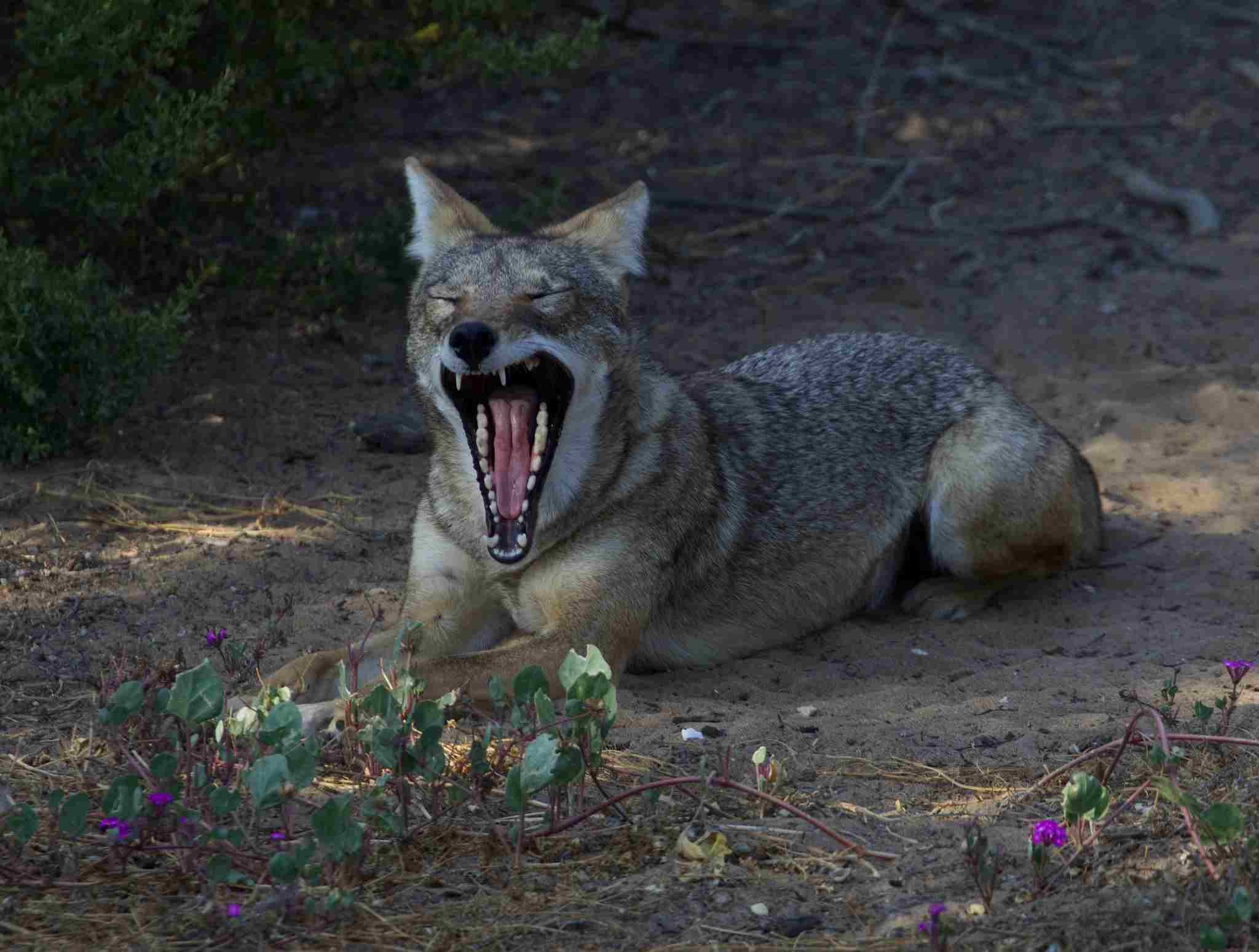
10. Are all Coyotes Carnivores?
No, not all coyotes are carnivores. In fact, all coyotes are classified as omnivores, meaning they have a diverse diet that includes both plant and animal matter. While they do consume meat, they also incorporate fruits, vegetables, and other plant materials into their diet.
Coyotes have a remarkable ability to adapt to different environments and food sources, which contributes to their omnivorous nature. They are opportunistic feeders, taking advantage of whatever food is available to them. This flexibility allows them to survive in a wide range of habitats, from forests to deserts to urban areas.
Their diet primarily consists of small mammals such as rabbits, rodents, and squirrels. However, they are not solely reliant on meat. Coyotes also consume insects, birds, reptiles, amphibians, fruits, berries, and even carrion. This varied diet ensures that they can find sustenance in different seasons and environments.
The omnivorous nature of coyotes is an important aspect of their ecological role. By consuming a wide range of prey and plant materials, they help maintain balance within ecosystems.
11. Can a Coyote Breed With a Dog?
Yes, a coyote can breed with a dog to produce offspring known as coydogs when the father is a coyote, or coyotes when the father is a dog. Both coyotes and dogs belong to the canid family, which means they share a close genetic relationship and can interbreed successfully.
The ability of coyotes and dogs to reproduce together is due to their similar genetic makeup and reproductive compatibility. When a coyote mates with a dog, the resulting hybrid offspring are usually fertile, meaning they can reproduce and produce their own offspring.
It is important to note that while coyotes and dogs can interbreed, it is relatively rare in the wild. This is because coyotes and dogs have different mating behaviors and territorial instincts, which can make successful mating and reproduction challenging. However, in areas where coyotes and dogs coexist, such as urban or suburban environments, interbreeding can occur more frequently.
12. Do Coyotes Eat Rabbits?
Yes, coyotes do eat rabbits. They are known to prey on rabbits in various habitats such as deserts, grasslands, and even urban areas. Rabbits are a common food source for coyotes due to their abundance and vulnerability.
Coyotes are opportunistic predators, meaning they will take advantage of any available food source, including small mammals like rabbits. They have sharp teeth and strong jaws that allow them to capture and kill their prey efficiently.
In deserts and grasslands, where rabbits are abundant, coyotes will actively hunt and chase them down. They use their keen senses of hearing and smell to locate rabbits and then employ their speed and agility to catch them. In urban areas, where rabbits may be more plentiful due to the availability of food and shelter, coyotes may also target them as a food source.
It’s important to note that while rabbits are a common part of a coyote’s diet, they are not the only food source. Coyotes are opportunistic omnivores, meaning they will also consume fruits, vegetables, insects, and even carrion when available. Their diet can vary depending on the season and the availability of different food sources.
13. Do Coyotes Eat the Whole Animal?
The extent to which coyotes eat the whole animal depends on various factors such as the number of coyotes, the size of the animal, and the presence or absence of other animals in the vicinity.
Coyotes are opportunistic feeders and will consume as much of their prey as possible. However, they may not always eat the entire animal. In some cases, if there are multiple coyotes feeding on a carcass, they may only eat certain parts of the animal, leaving behind the rest. This behavior is often observed when there is competition for food among the coyotes.
Additionally, the size of the animal plays a role in whether or not a coyote can consume the whole animal. Larger prey, such as deer, may be too large for a single coyote to consume entirely. In these cases, coyotes may feed on the carcass over a period of time, returning to it multiple times until it is fully consumed.
Furthermore, the presence or absence of other animals in the vicinity can also impact whether or not a coyote eats the whole animal. If there are other scavengers or predators nearby, such as vultures or larger carnivores, they may compete with the coyote for the carcass, resulting in the coyote only consuming certain parts.
14. What is the Problem with Coyotes?
Coyotes can pose several problems, ranging from economic losses to potential health risks. One of the main concerns is their ability to attack livestock and pets, leading to significant economic losses for farmers and pet owners. Coyotes are known to target small livestock, such as chickens and lambs, and can cause devastating damage to herds if not properly managed.
In addition to economic losses, coyotes can also transmit diseases. They can carry and spread diseases such as rabies, distemper, and mange, which can be a threat to both animals and humans. This is particularly concerning in areas where coyotes come into close contact with domestic animals or where there is a high population density.
Furthermore, coyotes can become a nuisance in urban and suburban areas. They may scavenge for food in residential areas, rummage through trash cans, and even approach humans in search of food. This can create conflicts between humans and coyotes, as well as potential safety risks.
15. Is it Good to Have Coyotes Around?
Having coyotes in the environment can have both positive and negative implications. On the positive side, coyotes play an important role in maintaining the balance of ecosystems. They help control populations of small mammals, such as rodents, which can become pests if their numbers are not regulated. By preying on these animals, coyotes help to keep their populations in check and prevent overpopulation.
Coyotes also contribute to the health of ecosystems by scavenging on carrion. They help to clean up the environment by consuming dead animals, which reduces the risk of disease transmission and prevents the spread of pathogens. This scavenging behavior also helps to recycle nutrients back into the ecosystem.
In addition, coyotes can serve as indicators of ecosystem health. Their presence or absence can provide valuable information about the overall health and biodiversity of an area. If coyotes are thriving, it suggests that the ecosystem is functioning well and able to support a diverse range of species.
However, there are also negative consequences associated with having coyotes around. As mentioned earlier, they can pose a threat to livestock and pets, leading to economic losses for farmers and pet owners. Additionally, there have been rare instances of coyote attacks on humans, although these are extremely rare and usually occur when coyotes are habituated to human presence or when they feel threatened.
16. Why are Coyotes a Threat?
One reason why coyotes are a threat, is their predation on pets and livestock. Coyotes are opportunistic predators and may target small animals, such as cats and small dogs, if given the opportunity. This can be distressing for pet owners and can lead to the loss of beloved companions.
In addition to preying on pets and livestock, coyotes can also spread diseases. They can carry and transmit diseases such as rabies, distemper, and mange. This poses a risk not only to other animals but also to humans who may come into contact with infected coyotes or their bodily fluids.
While rare, coyote attacks on humans have been reported. These incidents typically occur when coyotes feel threatened or when they have become habituated to human presence. It is important to note, however, that such attacks are extremely uncommon and should not be a cause for widespread fear.
Understanding the potential threats posed by coyotes allows us to take appropriate measures to mitigate any negative impacts. By implementing strategies such as secure fencing for pets and livestock, practicing responsible pet ownership, and avoiding feeding or approaching coyotes, we can coexist with these animals while minimizing potential conflicts.
17. Are Humans Predators to Coyotes?
Humans can be considered predators to coyotes, although their predation methods differ from those of other animals. While humans do not typically trap and kill coyotes as a means of predation, they can still have a significant impact on coyote populations.
One way in which humans act as predators to coyotes is through the destruction of their habitats. As human populations expand and encroach upon natural areas, coyotes lose their natural habitats and are forced to adapt to urban environments. This can lead to increased conflicts between humans and coyotes, as they compete for resources and space.
In some cases, humans may resort to lethal control methods to manage coyote populations. This can involve trapping, shooting, or poisoning coyotes in an attempt to reduce their numbers. However, it is important to note that these methods are controversial and can have unintended consequences. Indiscriminate killing of coyotes can disrupt their social structure and lead to an increase in their reproductive rates, resulting in larger populations.
It is also worth mentioning that humans indirectly impact coyote populations through the control of their prey species. As humans alter ecosystems through activities such as hunting and habitat modification, the availability of prey for coyotes can be affected. This can influence coyote populations and their distribution.
While humans can be considered predators to coyotes, it is important to approach coyote management with a balanced and informed perspective. Coexistence strategies, such as education, habitat conservation, and responsible pet ownership, can help minimize conflicts between humans and coyotes. By understanding the ecological role of coyotes and implementing sustainable management practices, we can ensure the long-term survival of both humans and coyotes in shared environments.
